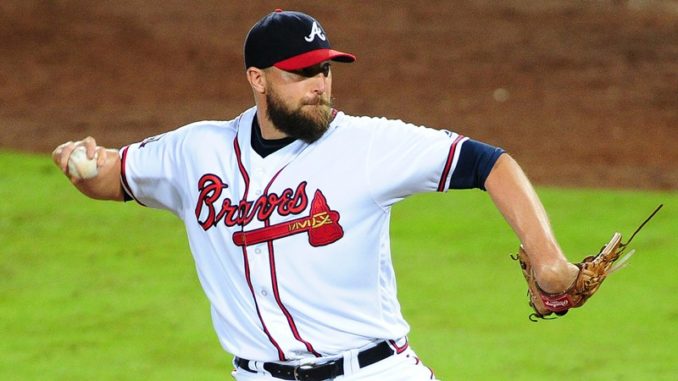
It’s the bottom of the ninth for my review of Braves system depth leading up to the start of Grapefruit League action. Next up I’ll be looking at the Braves relief pitchers, and Part 1 will examine the pitchers I project for the Atlanta and Gwinnett Braves. Over the last two seasons an astounding 52 different pitchers have appeared in relief for Atlanta. The Braves go into 2017 with hope that the carousel of relievers will, if not stop, will at least slow down.
 ATLANTA BRAVES
ATLANTA BRAVES
HIGH-LEVERAGE RELIEVERS
Jim Johnson, RHP
Johnson’s second tour of duty in that many seasons with Atlanta almost couldn’t have gone better for the veteran righty. Johnson improbably had arguably his best season at age 33, pitching to a 3.06 ERA/2.71 FIP and generating 1.4 fWAR despite missing most of the month of May with a groin strain. When closer Arodys Vizcaino was himself put on the shelf in July with an oblique injury, Johnson stepped adroitly into the role and pitched to a 2.08 ERA from July 10 through the end of the season. The Braves rewarded Johnson on the last day of the regular season with a two-year, $10 million contract, the first multi-year deal of his 11 season career.
This success likely has a lot to do with tweaks made by Johnson and former pitching coach Roger McDowell to raise Johnson’s release point. This had the effect of not only getting more sink out of Johnson’s primary weapon, the err… sinker…, but he also got more bite on his curveball and sinking movement on his change-up, which became a true strikeout pitch by late season. While you’ll probably go broke betting on 34-year-old relievers maintaining their effectiveness after a good year, Johnson seemed to get stronger down the stretch and comes into camp as the Braves top high-leverage option.
Arodys Vizcaino, RHP
From the time Vizcaino returned to the Braves after an 80-day PED-related suspension on July 7, 2015 through June 30, 2016, Vizcaino was one of the most dominating relievers in baseball, appearing in 57 games and pitching to a 1.63 ERA/2.24 FIP and generating 11.06 strikeouts per 9 innings during that time. I mention this because it seems that folks forget just how good Vizcaino can be when he’s physically right and getting sufficient rest. By June 2016 however, the abysmal state of the Braves bullpen caused manager Brian Snitker to call on Vizcaino in 15 out of the 28 games the team played. During that stretch Vizcaino became more erratic, walking more batters. He also started to lose his release point, releasing it lower as he tired. Vizcaino eventually went on the DL in mid-July with a strained oblique, and when he returned in August he only pitched four more games before right shoulder inflammation shelved him for the rest of the season.
When Vizcaino is on, he can generate strikeouts both with a 96-98 mph four-seam fastball that he’s comfortable placing up or down in the zone to force hitters to change eye-level, and with a tight 12-6 curveball that comes in around 10 mph slower. The health of Vizcaino will bear close watching this spring. If Vizcaino can show that his shoulder inflamation wasn’t a signal of longer-term problems, he and Johnson should once again form a formidable one-two punch at the back-end of the bullpen (as well as valuable potential trade pieces if the Braves decide to go that route).
Mauricio Cabrera, RHP
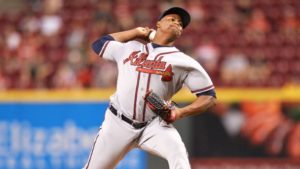
It speaks to the desperation of the Braves when they reached down to class AA Mississippi to pluck the gas-throwing Cabrera on June 27th. At the time, Cabrera was having a solid campaign for the M-Braves, pitching to a 3.21 ERA and striking out 9.4 batters per 9 innings, but the command problems that had plagued him all through his 6 year minor league career were also still in evidence, walking 5.9 batters per 9. What the Braves got was perhaps the best team rookie debut of any in 2016 with the exception of shortstop Dansby Swanson. Until a late-season blow-up outing against the Mets, Cabrera posted a 2.23 ERA while striking out nearly a batter an inning and walking 2.8 batters per 9. He did this with a fastball that averaged 100 mph, and he backs that up with a tight slider against right-handed batters and a 91 mph “change-up” that he employs against lefties. Cabrera’s command did start to revert towards the end of the season, perhaps due to having to pitch into late September for the first time in his career, but Cabrera will likely start 2017 in Atlanta with a lot of eyes on him as perhaps the hardest throwing pitcher in baseball.
LOW-LEVERAGE RELIEVERS
Jose Ramirez, RHP
After three seasons of getting tastes of the major league with the Yankees and Mariners, Ramirez nearly evenly split his time between AAA Gwinnett and Atlanta last season and saw improvement across the board in his performance from 2015. Control is still an issue with the 24-year-old, but he has been effective in limiting damage with Atlanta, and the Braves were comfortable with him pitching in higher leverage spots down the stretch. Out of options, Ramirez is a favorite to maintain a spot in 2017.
Chaz Roe, RHP
The Braves claimed the 30-year-old journeyman off waivers from the Baltimore Orioles in August, and Roe’s performance was pretty strong down the stretch for Atlanta. Roe is a sinker/slider reliever who really started to lean on his slider after he came to Atlanta to good effect; he struck out 11.7 batters per nine innings. However, Roe doesn’t really have a strong weapon against lefty hitters which limits him to short outings. Also out of options, Roe may be a trade candidate this spring.
Ian Krol, LHP
Krol emerged as the most used left-hander last season, pitching to a 3.18 ERA/2.91 FIP. Krol actually started the season in Gwinnett after a medicore showing in spring training, which prompted the Braves to trade for Eric O’Flaherty to be the main left-hander out of the pen. Krol re-established himself in Gwinnett, and after it quickly became apparent that O’Flaherty didn’t have much left he was recalled to Atlanta in early May. Krol actually had reverse splits in 2016, something that he has shown in his career, being more effective against right-handers. This is due to having a breaking ball that doesn’t actually have much break.
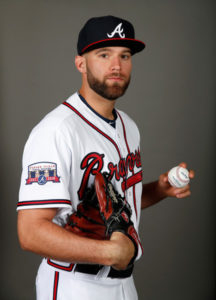
Paco Rodriguez, LHP
Steven Francis “Paco” Rodriguez was one of the best left-handers in the game in 2013, but his career has been stalled by a series of injuries since then, culminating until he tore his UCL last spring and had Tommy John surgery. Acquired from the Dodgers as one of the 14 players involved in the Hector Olivera trade, Rodriguez could represent a significant weapon for Atlanta against lefty hitters, who have only hit .174/.245/.234 against Rodriguez in his career. According to Brian Snitker this week, Rodriguez is expected to be a full participant in Grapefruit League action.
LONG RELIEVER
Josh Collmenter, RHP
Collmenter looks likely to start in the bullpen as the designated long reliever and spot starter barring an injury in spring traing. I wrote about Collmenter in the Braves System Depth: Starting Pitching, Part 1 post. Check it out, it may still be somewhat relevant!
OTHER BULLPEN CANDIDATES
Armando Rivero, RHP
A Cuban defector signed by the Chicago Cubs in 2013, the Braves acquired Rivero in December’s Rule V draft, which means that the 29-year-old has to make the major league team and remain with them all season or he must be offered back to the Cubs. All things considered, Rivero has a decent shot at sticking. His minor league career has been impressive, no season more so than last year’s 43 appearance campaign in which he pitched 67.2 innings and struck out an eye-popping 105 batters for AAA Iowa.
Daniel Winkler, RHP
Another Rule V draftee, but from way back in the December 2014 draft from the Rockies, Winkler got off to a promising start in 3 games for Atlanta before he suffered a horrific elbow fracture while throwing a pitch. Amazingly he still needs to be carried on the active roster for another 53 days before his Rule V status is satisfied. There’s been no update so far this spring about his medical state, and it seems possible that he could start 2017 on the DL, or simply offered back to Colorado and hope the Rockies decline based on his injury history.
Eric O’Flaherty, LHP
Despite a poor 2016 season, the Braves have brought O’Flaherty back into camp to see if the venerable lefty has anything left. The club has indicated that off-season neck surgery (similar to that of outfielder Nick Markakis before the 2015 season) has brought a lot of pain relief to O’Flaherty and believes that he can regain some of the form that made him one of the best left-handed relievers in Braves history from 2009-13.
Blaine Boyer, RHP
A former “Baby Brave” of the mid-2000s, Boyer has had a career resurgence in the majors the last three seasons after not pitching at all in 2012 and pitching 2013 in Japan. Boyer has one of the lowest strikeout rates in the majors and gets by through limiting hard-hit balls.
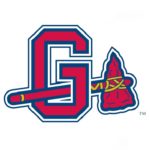
GWINNETT BRAVES
HIGH-LEVERAGE RELIEVERS
**TOP 30 PROSPECT** A.J. Minter, LHP (Promotion)
Minter enters camp with the biggest prospect buzz of any Braves reliever since Craig Kimbrel thanks to the silly-good numbers he posted over three minor league levels (34.2 innings pitched, 47 strikeouts, 1.30 ERA, 0.96 FIP). While Minter has a shot at making the big league club out of camp, he has yet to pitch in back-to-back games in the season after having Tommy John surgery his junior year with Texas A&M.
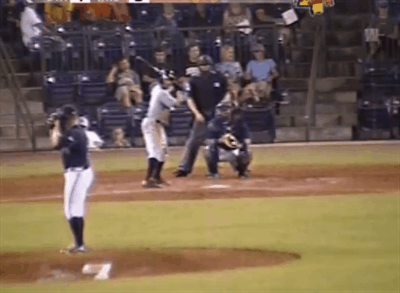
Luke Jackson, RHP
Acquired this off-season from the Rangers organization for Tyrell Jenkins and Brady Feigl, Jackson could be the poster-child for the strategy under the Hart/Coppollela front office regime from trading for high-risk/high-reward talent whenever and however possible. Jackson is a big righty with a big fastball that has been clocked into the triple-digits. He’s also got a big curveball that can be devastating when it can find it’s way close to the plate, helping him to 11.5 strikeouts per 9 innings in the minors last season. The Rangers couldn’t get Jackson to throw the ball close to the plate enough to be effective, so the Braves will take a shot, and they have to be heartened by the recent success of Mauricio Cabrera.
Akeel Morris, RHP (Promotion)
Morris was a 10th-round selection by the Mets in the 2010 draft and was traded to the Braves last June for Kelly Johnson. Morris had been a steady riser for the Mets, pitching to a 0.63 ERA in class A Savannah in 2014 and a 2.05 in A+ and AA ball in 2015. A couple of bad outings in the early part of the season lead to a 4.62 ERA at the time of the trade, though peripheral metrics show he was essentially the same pitcher before and after the trade. For Mississippi, he had a 2.27 ERA, and he was briefly called up to Atlanta on August 12 to be the emergency 13th man in the bullpen, but wasn’t needed and was sent back to Mississippi the next day without an appearance.
Morris’s fastball can crank up to around 98 when he needs to, but he typically runs it up to between 92-95. His change-up can be a devastating pitch when he locates it, but if he can’t throw it for strikes he can have a long day. He has a slider as a third pitch that saw good development while in Mississippi but is still a work-in-progress. Even with his existing repertoire Morris is on a good track to hit the majors at some point in 2017, especially as a player on the 40-man roster, but he’ll likely work on further refinement in class AAA Gwinnett to start the season.
LOW-LEVERAGE RELIEVERS
Jason Hursh, RHP
The 31st overall pick by the Braves in 2013, Hursh was converted full-time to the relief role mid-season of 2015. Hursh was terrific last season for Mississippi and was promoted to Gwinnett in late July. Hursh was added to the 40-man roster and promoted to Atlanta in mid-August. He was sent back down after an August 17th appearance where he walked 3 and gave up 4 runs and only got one out.
A big guy (6’ 3”, 200 pounds), Hursh has a big fastball that he can regularly gun up to the high ‘90s now that he’s committed to the bullpen. When he’s on, the fastball has a natural sinking trajectory that generates both swing-and-miss and groundballs. He also has a slider and a change-up that he uses against lefties, an aspect of his game that really improved in 2016. When he’s off he has a hard time commanding the fastball and will give up walks and extra-base hits. Hursh will likely start the season in Gwinnett; now on the 40-man roster, Hursh could be in line for an early call-up.
Bradley Roney, RHP
Roney was an 8th-round pick by Atlanta in the 2014 draft out of Southern Mississippi, one of many relatively polished college relievers that were popular selections in the later rounds of the Frank Wren-era drafts, a trend that has continued under Coppolella and Hart. As such, Roney has had a rapid rise through the farm system, jumping from Rome to Mississippi in 2015 followed by promotion to AAA Gwinnett mid-season in 2016. Roney’s most impressive outing of the season was in Game 1 of Gwinnett’s divisional playoff series against Columbus. Relieving struggling starting pitcher Carlos Portuondo in the 3rd inning of a tie game with two out and a runner on 3rd, Roney struck out his first batter to get out of the inning. Roney would continue in the game for 3 more innings, striking out 8 batters in total, and Gwinnett would hold on to win 5-4.
Roney’s fastball sits in the 95-97 range with decent rising movement. He backs that up with a big looping curveball, and a slider that is decidedly a third pitch. Roney is a bit of a Jekyll-and-Hyde pitcher in that when he’s on he can be dominating, as in the outing against Columbus, but sometimes he loses his arm slot and/or his landing spot which will cause him to be wild, and the 7.35 walks per nine simply won’t cut it any further.
Caleb Dirks, RHP (Promotion)
Another big-bodied college reliever (6’ 3”, 220 pounds), Dirks was drafted in the 15th round of the 2014 draft. Dirks had an impressive first season in the Braves organization, zooming past the rookie leagues up to Rome in the year he was drafted. 2015 got off to a slow start because of some non-serious injuries, and in July he was traded to the Dodgers for international bonus pool slots. Dirks pitched very well in the Dodgers system in 2015, ending up in AA Tulsa, which is where he debuted in 2016. Dirks was traded again, this time back to the Braves along with teammate LHP Phil Pfiester in the Bud Norris deal. In both Tulsa and AA Mississippi, Dirks got excellent results, and had two scoreless outings in Mississippi’s successful division playoff series.
Dirks’s stuff won’t wow anyone, but his mechanics are consistent and he gives hitters the exact same look no matter if he’s throwing his fastball, slider, or change-up. Dirks has a long but quick stride with a high kick that plays up his fastball, which sits at around 93 mph. This allows for good deception with his pitches, and he relies on fooling batters into chasing. If he’s not hitting his spots and hitters can lay off the pitches off the plate, he can get into trouble. He doesn’t have a great out-pitch, but what he’s got has been more than enough to succeed at AA. Dirks will likely start 2017 in AAA Gwinnett, and if successful could get a look in Atlanta before the end of next season.
Sam Freeman, LHP
Freeman was a minor league free agent signing in November having most recently played in the Brewers organization. A journeyman lefty, Freeman will turn 30 in June and still has trouble finding the strikezone on a consistent basis, which is a shame because lefties that can sit easily in the mid-90s with his fastball don’t exactly grow on trees, even in this velocity-crazed era. Freeman has had some major league success, pitching three season in the Cardinals organization and accumulating a 3.33 ERA in 81 games from 2012-2014 as a LOOGY for St. Louis. While Krol, Rodriguez, Minter, and even a possibly revitalized O’Flaherty may put the Braves on a much better footing regarding the left-handed side of their bullpen this spring, it wouldn’t be a shock to see Freeman on the team at some point in 2017.
LONG RELIEVER
Joel De La Cruz, RHP
De La Cruz is a sinker/slider specialist who managed to get 9 starts for the Atlanta Braves in 2016, which tells anyone what they need to know about the state of last year’s rotation. I wrote about him in Braves System Depth: Starting Pitching, Part 1.
OTHER BULLPEN CANDIDATES
Rhiner Cruz, RHP
A former Tigers, Mets, and Astros farmhand who got into 72 games with the rebuilding Astros in 2012-13 after being selected by Houston in the Rule V draft, Cruz pitched last season in the Mexican League. Cruz has a four-seam fastball that sits in the mid-90s and has some natural rising movement to it. When he’s on, that plays well with a diving slider that can generate some swing-and-miss. The 30-year-old has never had an abundance of control, so it will be interesting to see what the Braves scouts saw in him to not only offer him a minor league deal, but also an invitation to major league spring training.
Matt Marksberry, LHP
Marksberry has ridden the Laurenceville-to-Turner Field shuttle bus the last two seasons, with good success in the minors and limited success in the majors. Marksberry ended up on Atlanta’s DL in mid-July with left rotator cuff inflammation, and stayed the rest of the season. His offseason was way too eventful as he was hospitalized in October for severe dehydration and was briefly in a medically induced coma after having a colonoscopy and suffering a collapsed lung in the process. Fortunately Marksberry seems to have made a full recovery. Marksberry can be very effective against left-handed hitters and going into his age-25 season still has time to carve himself out a major league career as a LOOGY.
Andrew Albers, LHP
Albers fits into the long relief/5th-starter mold, and I wrote about him in Braves System Depth: Starting Pitching, Part 1.
David Peterson, RHP (Promotion)
An 8th-round pick by Atlanta in the 2012 draft, Peterson made a triumphant return from Tommy John surgery in 2015, advancing three levels from Carolina up to Gwinnett and finding success at each stop. Peterson looked like a dark horse candidate to make the Atlanta bullpen in 2016, but had too many blow-up outings for Gwinnett. After having back-to-back 5-run outings, Peterson was given a week off thanks to the 7-day DL, then sent all the way back down to Carolina on June 1. Peterson carved up Carolina League hitters for a week and was promoted back up to Mississippi where he was solid, if unspectacular. Now going into his age 27 season and with a wave of pitching talent in the low-A and high-A levels, Peterson needs to make his mark soon to stay viable in the organization.
Michael Kirkman, LHP
Kirkman is a former Texas Ranger farmhand who has bounced around with the San Diego and Milwaukee systems the last two years, getting into one major league game for each of them last season. Kirkman seems to be the classic “AAAA” pitcher, having success at the AAA level, but just not able to stick in the majors. While he’s been a little better than just a lefty specialist at the AAA level, he does post better results against left-handed hitters where he can utilize a decent slider to success. The Braves signed Kirkman to a minor league deal earlier this month.
Rex Brothers, LHP
Brothers had an eventful 5-season career with the Colorado Rockies, including a stint as their closer in 2013 when he turned in an impressive 67.1 inning, 76 strikeout season. While he continued to have some success the following seasons, his overall lack of control combined with losing some velocity off his mid-90s fastball made him ineffective enough that the Rockies ended up sending him back to AAA in 2015, then trading him to the Cubs that off-season. Brothers didn’t make the Cubs out of spring training and was released, and heended up not throwing a professional pitch in 2016. The Braves will take a look to see what he’s got left, but that he didn’t get an invitation to major league camp leads to the conclusion that it may not be much.
Steve Kent, LHP
The 2016 season marked Kent’s second tour with the Braves organization after signing as an international amateur free agent out of Australia in 2006. Kent was a prospect for the Braves, but was released after the 2011 season. Kent went back to Australia where he pitched for the Canberra Cavalry until he tore his UCL and required Tommy John surgery during the 2012 season. The Braves brought him back last year as minor league pitching depth and Kent had a solid season for AA Mississippi before getting a late-season promotion to Gwinnett. Kent is purely organizational filler.
FINAL THOUGHTS: Last season’s bullpen started out as a nightmare for Atlanta, but ended with some surprisingly effective contributions from rookies Mauricio Cabrera and Jose Ramirez, an unexpected pick-up in Chaz Roe, and a resurgent Jim Johnson. The Braves chose not to address the bullpen at the major league level at all this offseason, showing faith in the crew that ended last year plus hoping for a healthy return of Arodys Vizcaino. If there’s one lesson that the Braves should have learned over the last several seasons however is that there is never enough bullpen arms, and when injury or ineffectiveness inevitably claims a pitcher, at the minimum the AAA level looks to be stocked with a lot more intriguing arms than last season as well.
OFR TOP 10 RELIEF PITCHER PROSPECT RANKINGS (WITH EXPECTED LEVEL):
- A.J. Minter (AAA)
- Luke Jackson (AAA)
- Akeel Morris (AAA)
- Jacob Lindgren (MLB/DL)
- Thomas Burrows (A)
- Armando Rivero (MLB)
- Caleb Dirks (AAA)
- Corbin Clouse (A+)
- Jason Hursh (AAA)
- Devan Watts (A+)
Other entries in this series:
Catcher
First Base
Second Base
Third Base
Shortstop
Left Field
Centerfield
Right Field
Starting Pitching, Part 1 (Atlanta/Gwinnett)
Starting Pitching, Part 2 (Mississippi/Florida)
Starting Pitching, Part 3 (Rome/Danville)

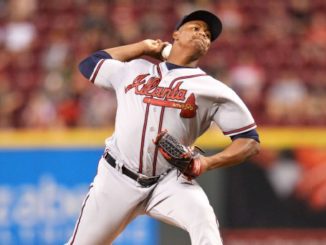
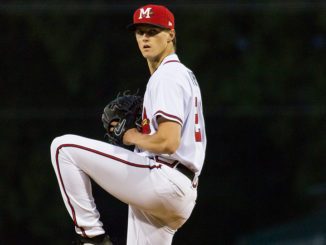

Leave a Reply